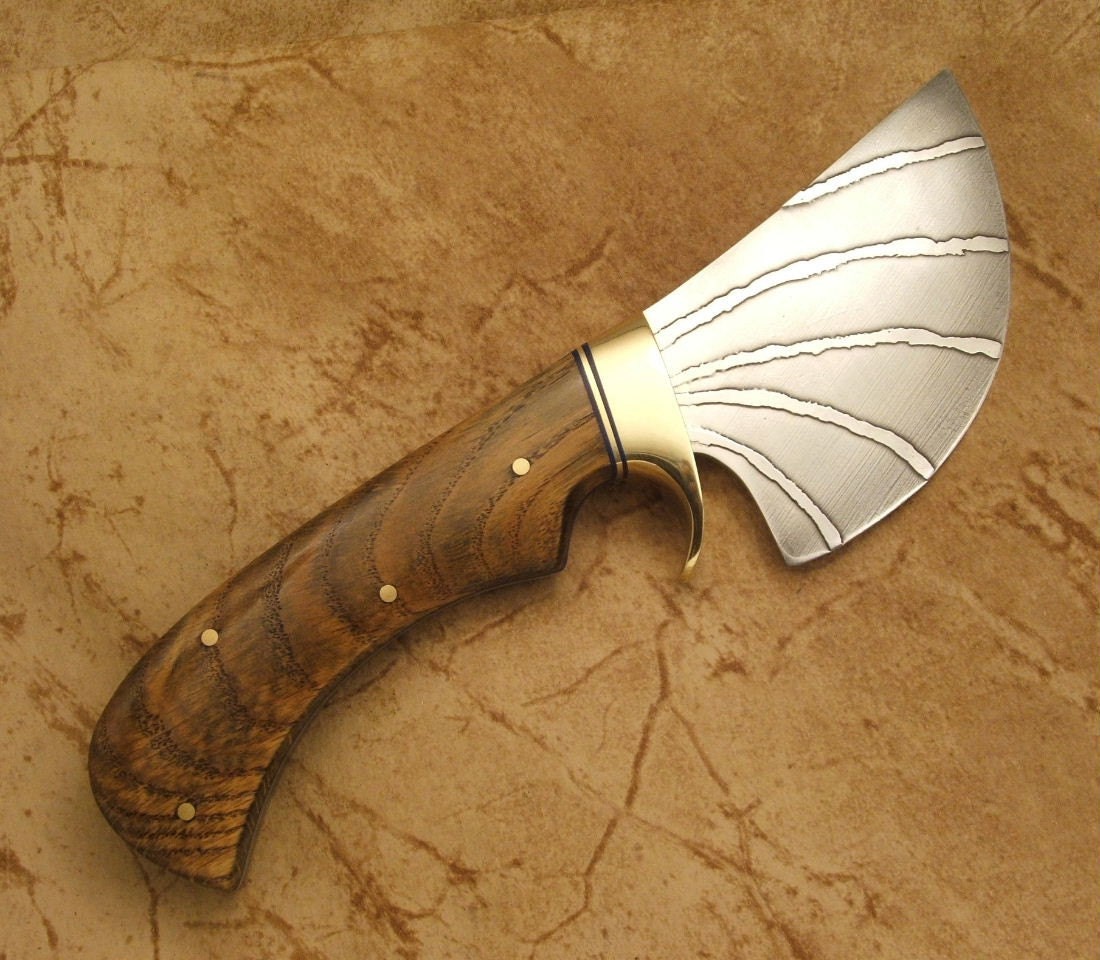The Blackthorn Blade is finally finished, complete with a show stand (made of ebony and holly), and a belt sheath (basswood liner, dyed 8oz cowhide back and loop, bison leather front).
The concept and the blackthorn of the handle were provided by NRJJ.
Blackthorn (Prunus spinosa)is a tree with an interesting history, being used as the traditional Irish shillelagh, walking sticks, and sloe gin from the berries. I was intrigued by the idea, and had a blade that seemed appropriate, in a sgian dubh style, so, with some discussion we decided to go for it.

It’s been quite a process to get this knife to where it is today. I’ve posted a few pictures of the process, but thought it might be nice to put them all in one place.
The blade is hand forged of 1095 high carbon steel in my charcoal forge and quenched and heat treated by me as well.

I worked on the blade first and, keeping with the blackthorn concept, put some vine and thorns file-work on the spine of the blade. This was my first file-work of that type.

Next I added a stacked water buffalo horn and nickel-silver spacer, to blend from the blade to the handle.

NRJJ sent me a number of root and branch pieces of blackthorn to pick the right one for his knife. One of them stood out to me as the obvious choice, so I shaped the end knob on the sander.

The wood itself is pale for the most part, but this particular piece has some interesting coloration in the knob, which stands out pretty well, and contrasts nicely with the dark bark.

Unfortunately the wood was a little thin as soon as you got any distance from the knob. In order to match the spacer, and provide a sufficiently robust handle, I had to split the blackthorn horizontally, which left a big gap between the top and bottom. I put it together anyway, and smoothed out the transition between the spacer and the handle, exposing some of the pale wood.

We decided that a black material would be the best to fill that gap, and to contrast with the wood. It worked pretty well, but is a pretty messy process.

In cleaning off the excess, some more of the dark brown bark came off. So, I had a situation – how to blend the very pale wood, with the dark bark. I cut the bark near the knob so that it wouldn’t peel, and then started applying layer after layer of finish.

After putting it all together, I decided it needed something shiny to break up the black, so I filed a couple of stainless pins, and that worked out pretty well. After a few more layers of finish, it was about done.

I worked the blade to hair popping sharp, and had a finished knife – except for marking the blade, which fortunately I didn’t screw up either.
An idea popped into my head when I was looking at the knife and its contrasts in black and white. I thought – hey! Let’s turn a ball of ebony and holly. That would be fun. So I glued together some ebony and holly, and spun away. The leftovers became the sides of the stand, and the ball holds the blade. A little arty, but I like it.

Since that was a little odd, I decided to make a sheath as well. I think it turned out pretty well too, and is much more understated than the stand.

Final result: ~NRJJ~ II: 4" Blade, 11" Overall.
And that... is that.
Unusual, but fun.






























































